STRANGE MARCH STORM
Reading old documents, I see many books and newspapers talking about this strange and terrible storm. Strange because the storm happened in early summer, not the flood season in the Mekong Delta. "Suddenly a silent storm/Floods of the year of the dragon met the month of the dragon/Thunderstorms blew up trees, birds were disenchanted/The flat land was covered with waves, they were disenchanted..." Those are some verses (excerpts) published in the Nong Co Min Dam newspaper, issue dated June 9, 1904.
Nong Co Min Dam was one of the few early Vietnamese newspapers published in Saigon, specializing in economic information, classifieds, and advertisements. The editor-in-chief was Luong Khac Ninh, alias Du Thuc, from Ben Tre . Perhaps this was also the national language newspaper that reported the earliest news about this storm. The newspaper was published once a week on Thursday. The storm occurred on Sunday, May 1, 1904, and the Nong Co Min Dam issue dated May 5, 1904 and subsequent issues all had the following report: "On March 16, from 6 am, it rained steadily, commonly called fabric-pulling rain, the sky was cloudy without sun, it rained until 12 noon. The wind blew heavily, blew until 2 pm, blew until houses were tilted, boats were capsized, and boats were sunk. In Saigon, tamarinds were scattered all over the streets, in Xom Chieu houses rolled over and filled the ground, water rose and flooded Nha Be and Long Kieng, buffaloes and cows drifted, people and animals were in chaos".
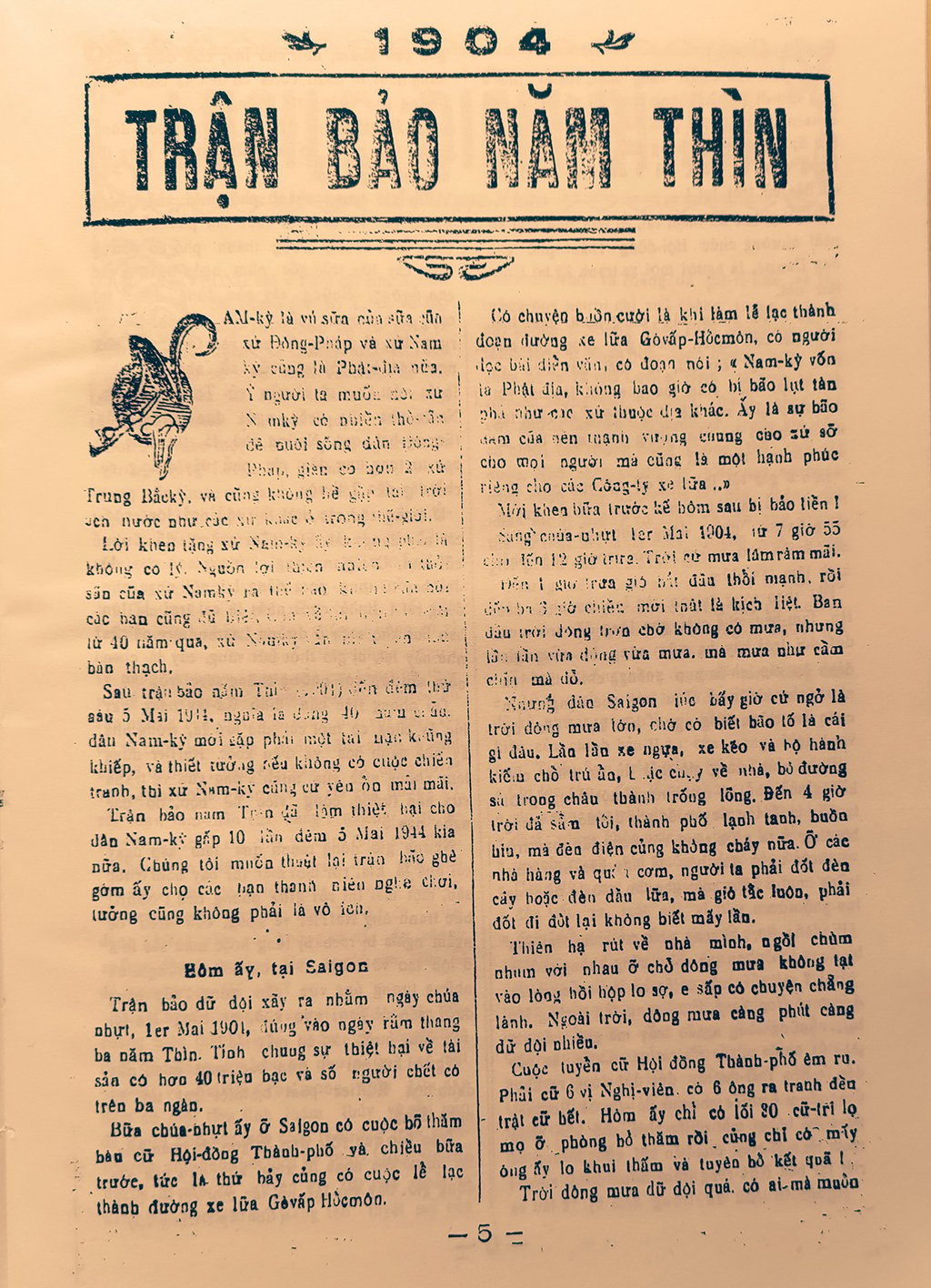
Report on the storm of the year of the Dragon 1904 in the last weekly newspaper Nam Ky published on June 8, 1944
The next issue (May 12, 1904) of the Nong Co Min Dam newspaper reported in more detail: "In Saigon, on the river, millions of fishing boats and ferry boats sank, on the banks, fallen trees blocked the road, and the coolies working on the road could not clear it all... All the gas lamps were broken and could not run, forcing the entire capital to be put under siege, and the damaged warehouses, houses, and boats were estimated at twelve thousand nine hundred and fifty silver coins."
"In Go Cong, several villages near the sea were completely destroyed, houses collapsed and people were swept away. In Tan Binh Dien and Tan Thanh, each village had a few dozen people left. Kieng Phuoc and Tan Duan Dong villages were also severely affected."
"In My Tho, houses and castles were damaged, some collapsed. All 3-4 of your Chaloupes sank. I don't know how many merchant boats sank... Also on that day, the 2:30 pm train to My Tho was blown halfway by the wind."
"In Ben Tre, nine out of ten thatched houses collapsed. Most tiled houses had their roofs blown off. Two of the three chaloupe boats used to transport pedestrians in the district sank. One sank in the Ham Luong River near Ba Tri, and one sank in Cai Mon. The western provinces were all safe. In Soc Trang that day, there was only one heavy rain. In Can Tho, the crops and fruits were slightly damaged"…
STORM IN SAIGON - C HO LON
40 years later, for some reason, the Nam Ky Weekly newspaper of writer Ho Bieu Chanh, in its last issue published on June 8, 1944, had a very long and detailed report on the 1904 storm in the year of the Dragon. The article said: On that Sunday, in Saigon, there was a ballot to elect the City Council and the afternoon before, there was a ceremony to inaugurate the Go Vap - Hoc Mon railway. At this ceremony, a speaker read a speech saying: "Nam Ky is a Buddhist land, never devastated by storms and floods. That is the guarantee of common prosperity for the country, for everyone, and also the personal happiness of the railway companies...".
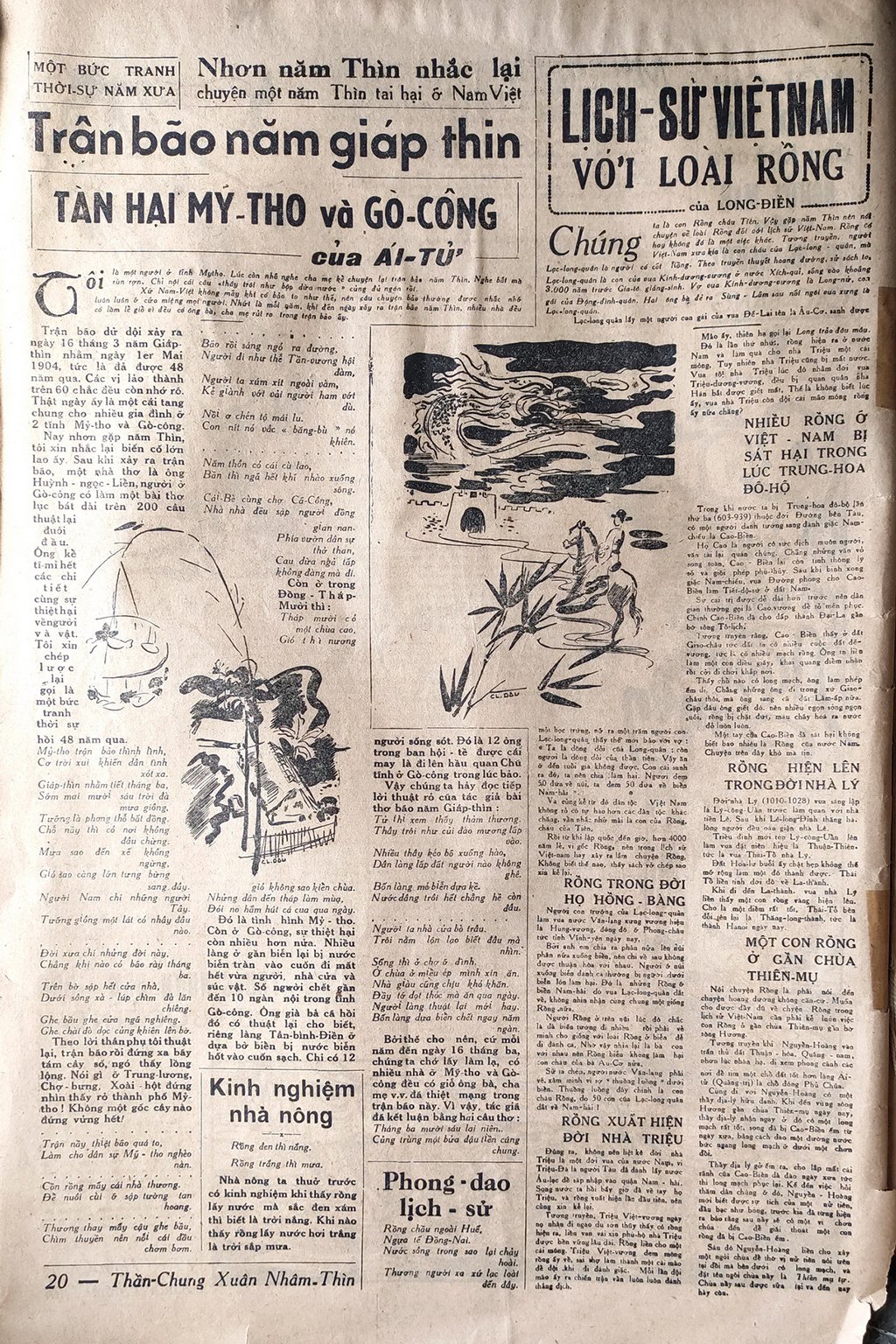
The Than Chung Spring Magazine of Nham Thin 1952 had an article recalling the storm.
Document by Hoang Phuong
However, just as they had praised the previous day, the next morning it continued to rain steadily. By noon the wind began to blow strongly, and then there was a storm and rain, and the rain was pouring down like a bucket. One by one, carriages, carts, and pedestrians sought shelter or ran home.
The City Council elected 6 council members, but that day only about 30 voters came to the polling booth and only a few people opened the ballots and announced the results. More than 400 voters were absent, so the 6 candidates did not get enough votes, so the following Sunday there had to be a re-election.
At 5 pm, the storm was fierce. Most of the thatched houses and old houses around Saigon collapsed or had their roofs blown off. Along the Saigon River, large and small ships, sampans, and fishing boats broke their anchors and drifted in the middle of the river, being hit by the waves and wind, some sinking, some rising as if jumping. Ships and boats collided and sank, the sound of people crying and calling for help resounded…
By 10 pm, the storm had subsided, but the rain continued until Monday morning. At that time, people could only see a shadow of a person in the city. It was estimated that 900 large trees had been uprooted and were lying haphazardly on the streets. The trees that were still standing were also crooked. Fallen leaves covered the streets and flew into the windows of high-rise buildings, especially in the Old Market area and near the Commercial Department.
The Southern Weekly also quoted l'Opinion and Le Courrier as reporting on that storm, with a passage: "Along the railway running along the river from Saigon to Cho Lon, a waterspout descended from the sky, knocking over a train car, tearing off the roof of the train depot and crushing a thatched house. About ten meters away, the waterspout scooped up a man and carried him into the air before throwing him to the ground"...
In the issue published on June 8, 1944, the Nam Ky Weekly also introduced at the end of the article "The Dragon Storm" as "to be continued", but that was also the last issue, after 85 consecutive issues published since September 1942. Some people think that at that time, World War II was about to end, the economy was extremely difficult. Therefore, even if there was money, it was impossible to buy printing paper, so the newspaper had to close. (to be continued)
Source link


![[Photo] Prime Minister Pham Minh Chinh meets with Brazilian President Lula da Silva](https://vphoto.vietnam.vn/thumb/1200x675/vietnam/resource/IMAGE/2025/7/7/0708d7705aab44c39a34ab038b8d2fd1)

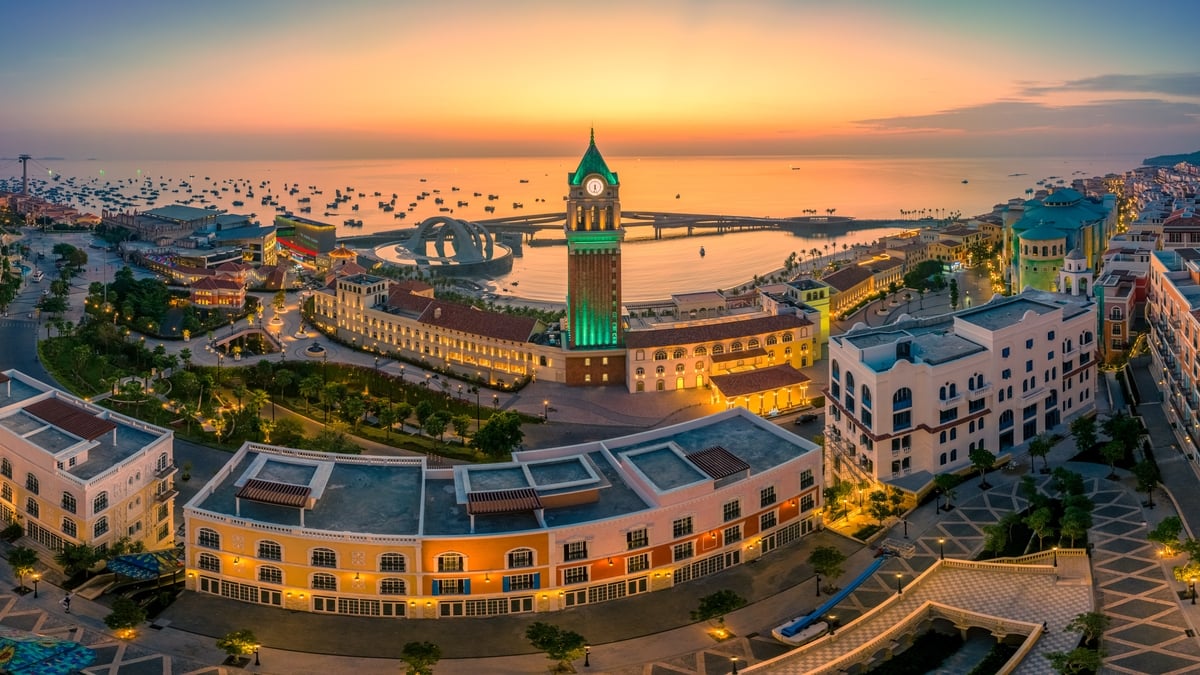
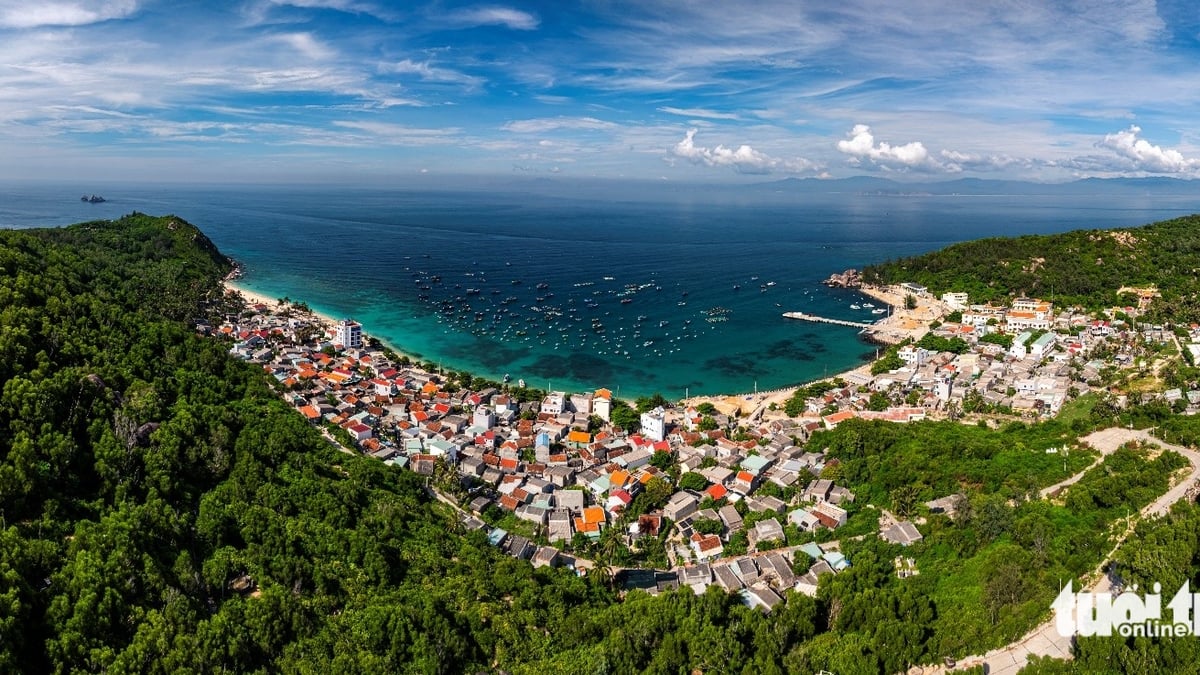
![[Photo] Prime Minister Pham Minh Chinh receives leaders of several leading Brazilian corporations](https://vphoto.vietnam.vn/thumb/1200x675/vietnam/resource/IMAGE/2025/7/6/3622160b379746e6bca82f804ea35e47)

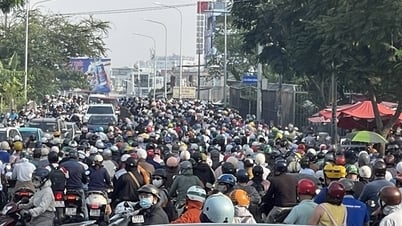





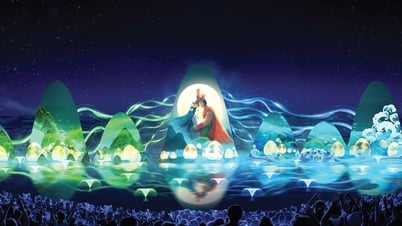








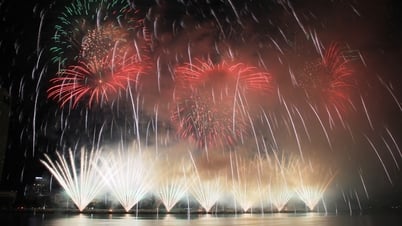


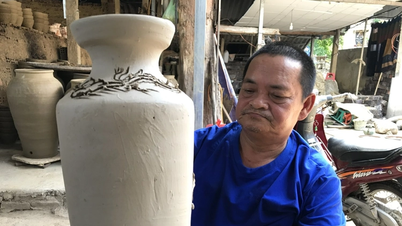





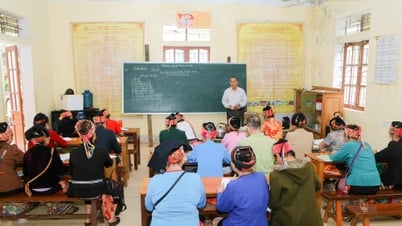

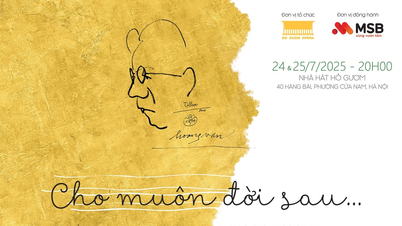














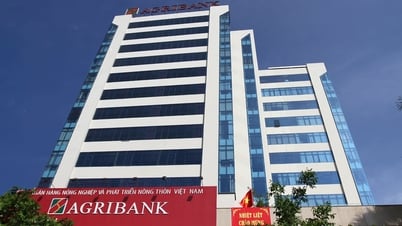































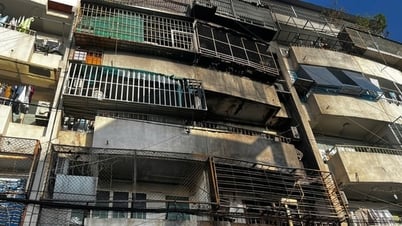



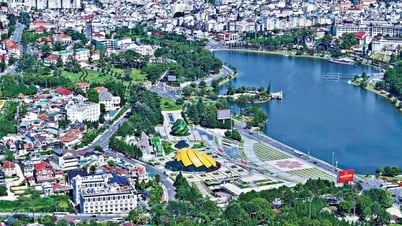








![[OCOP REVIEW] Bay Quyen sticky rice cake: A hometown specialty that has reached new heights thanks to its brand reputation](https://vphoto.vietnam.vn/thumb/402x226/vietnam/resource/IMAGE/2025/7/3/1a7e35c028bf46199ee1ec6b3ba0069e)


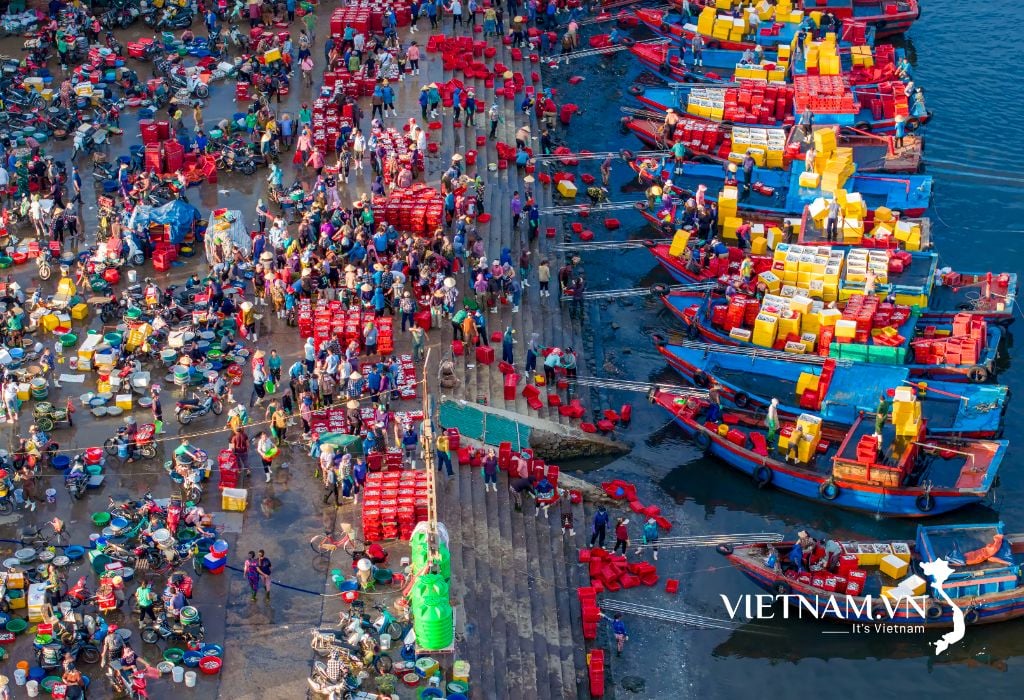



Comment (0)